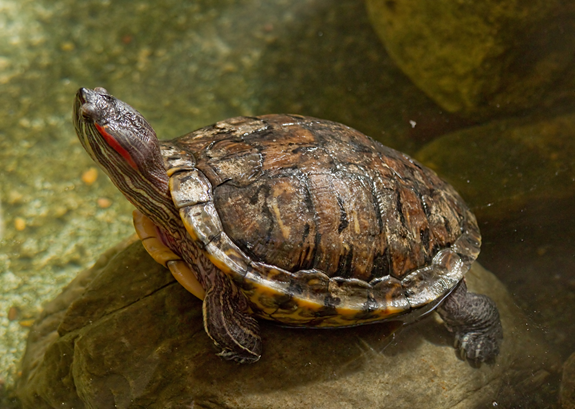- Pupilloconstriction or iris movement, in response to light, in turtles is very slow, especially when compared to that of mammals
- It takes several minutes for iris movement to occur in turtles, but only microseconds to seconds in mammals (See video)
- Melanopsin has delayed photoreceptions or responses to light that are correlated with sustained pupil dynamics. This observation has triggered interest in the slow pupil response of the turtle
- Fish and amphibians also possess these slow dynamics
- It is supposed that melanopsin uses two primary orthologs: a mammalian ortholog (Opn4n) and a non-mammalian ortholog (Opn4x)
- Significance of Study:
- Little information is known about the role of melanopsin in reptiles. Therefore, an analysis of melanopsin will provide understanding of the evolution of melanopsin in reptiles. It may also explain why the turtle has such slow pupil responses
- As a result of prior behavioral, electrophysiological, and quantitative real-time polymerase chain reaction (qPCR) studies, it is thought that melanopsin located in both the iris and the retina of the turtle plays some role in the turtle’s slow pupil response
- The mRNA for the different melanopsin isoforms seem to be present in the iris and retina of a turtle. However, how the mRNA is expressed and where in the cells mRNA expression occurs are not well understood
Purpose/Hypothesis
- Purpose: To perform fluorescent in situ hybridization (fISH) to determine if melanopsin mRNA signals are present in cells of the iris of the turtle, to support the possibility of mRNA expression
- Hypothesis: If melanopsin is responsible for the turtle’s slow pupil constriction to light, then the melanopsin mRNA is present in the cells of the iris

